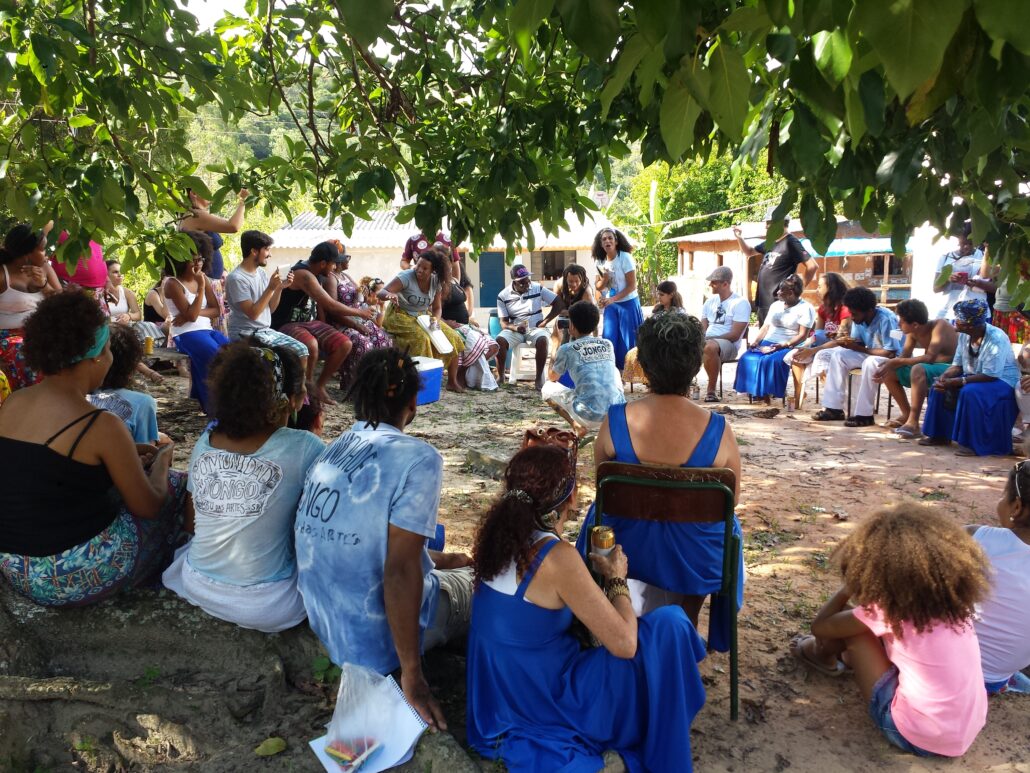 https://greenmarked.it/wp-content/uploads/2024/07/Cattura-1.jpg
880
1618
Sarah Santos Ferreira
https://greenmarked.it/wp-content/uploads/2022/01/LOGO-GREENMARKED-SITO-600x600.png
Sarah Santos Ferreira2024-07-16 18:56:142024-07-16 19:45:21Three Environmental Initiatives Making a Difference in Brazil
https://greenmarked.it/wp-content/uploads/2024/07/Cattura-1.jpg
880
1618
Sarah Santos Ferreira
https://greenmarked.it/wp-content/uploads/2022/01/LOGO-GREENMARKED-SITO-600x600.png
Sarah Santos Ferreira2024-07-16 18:56:142024-07-16 19:45:21Three Environmental Initiatives Making a Difference in BrazilJuly 21, 2023

The Origin of Quilombola communities
The story of Quilombola communities dates back to the period of colonial slavery in Brazil. Many enslaved individuals escaped captivity and sought refuge in remote and inaccessible regions. Their settlements in these areas came to be known as Quilombo (place of rest in quimbundo language). These communities, known as Quilombolas, were safe havens where freedom fighters resisted oppression by colonizers and created a unique blend of African, Indigenous, and Portuguese cultures. However, despite their efforts to protect and hide their communities, quilombolas were constantly hunted and attacked by colonizers which compelled them to fight and escape to find new settlement locations.
Cultural Heritage and Traditions
The heart and soul of Quilombolas lie in their cultural heritage, which has been passed down through generations. Music, dance, storytelling, and oral traditions play a vital role in preserving their identity.
Quilombolas’ cultural expressions are characterized by a fusion of African rituals, indigenous knowledge, and Brazilian folk traditions, creating a distinctive tapestry of customs and practices. Some quilombola communities are also a space of religious reference, acting as terreiros.
The Quilombola way of living
The Quilombola communities are made up mostly of a rural black population. The Quilombos primarily rely on family farming as their main source of livelihood, while also diversifying their income through various other activities.
The most common quilombola rural practices are agriculture, extractivism, livestock and fishing. Many communities preserve sustainable cultivation practices such as the “coivara” system [1]. This comprises the rotation of areas for planting, allowing the recovery of the “capoeiras” (tall types of grasslands) which soon become secondary forests.
Artisanal crafts are also another vital aspect of their heritage and a secondary source of income for quilombolas. Skilled artisans create beautiful handcrafted products, that vary from sewn textiles, quilts, baskets, and pottery, using traditional techniques that have been safeguarded for centuries [2].
Challenges and Struggles
Despite their rich heritage, Quilombola communities face numerous challenges in the modern era. Land rights remain a pressing issue, as many of these communities still do not possess legal ownership of the land they have inhabited for generations. Encroachments by agricultural interests, infrastructure projects, and mining activities threaten their ancestral territories, leading to displacement and loss of cultural identity.
Additionally, socioeconomic disparities and limited access to education and healthcare often leave Quilombola communities marginalized and vulnerable. Language barriers, discrimination, and lack of representation exacerbate their struggles, making it difficult to overcome systemic challenges.

Fig. 1: Children playing around the atabaques at the Quilombo Cafundó (Author. Salto de Pirapora, 2016).
Preserving Cultural Identity
In the face of these challenges, Quilombola communities have shown remarkable resilience in preserving their cultural identity. Grassroots movements, supported by national and international organizations, have been instrumental in advocating for land rights, promoting cultural heritage, and empowering community members.
Education and awareness programs have been launched to foster pride in their cultural heritage and ensure the passing down of traditions to younger generations. One example of this is the connection between the University of São Carlos campus Sorocaba and the Quilombo Cafundó. Together, the academic and quilombola communities have been organizing events to promote the cultural activities developed in the Quilombo with the goal to increase visibility and inspire their youngsters to preserve their ancestral culture.
Related articles:
References:
[1] Silva, Gutemberg de Vilhena. (2022) Apresentação do Dossiê Amapá, segunda edição. Confins. Retrieved on 20 July 2023, from https://doi.org/10.1016/j.resconrec.2005.12.002
[2] Brasil, SEBRAE – Serviço Brasileiro de Apoio às Micro e Pequenas Empresas: Artesanato Quilombola, Retrieved on 20 July 2023, from https://sebrae.com.br/sites/PortalSebrae/artigos/conheca-o-artesanato-quilombola,0c3a17f4bd962810VgnVCM100000d701210aRCRD
Cover- and preview image: Conversation circle between quilombolas e university students at the Quilombo Cafundó, Salto de Pirapora, Brasil. Photo by Sarah Santos Ferreira, 2016.










